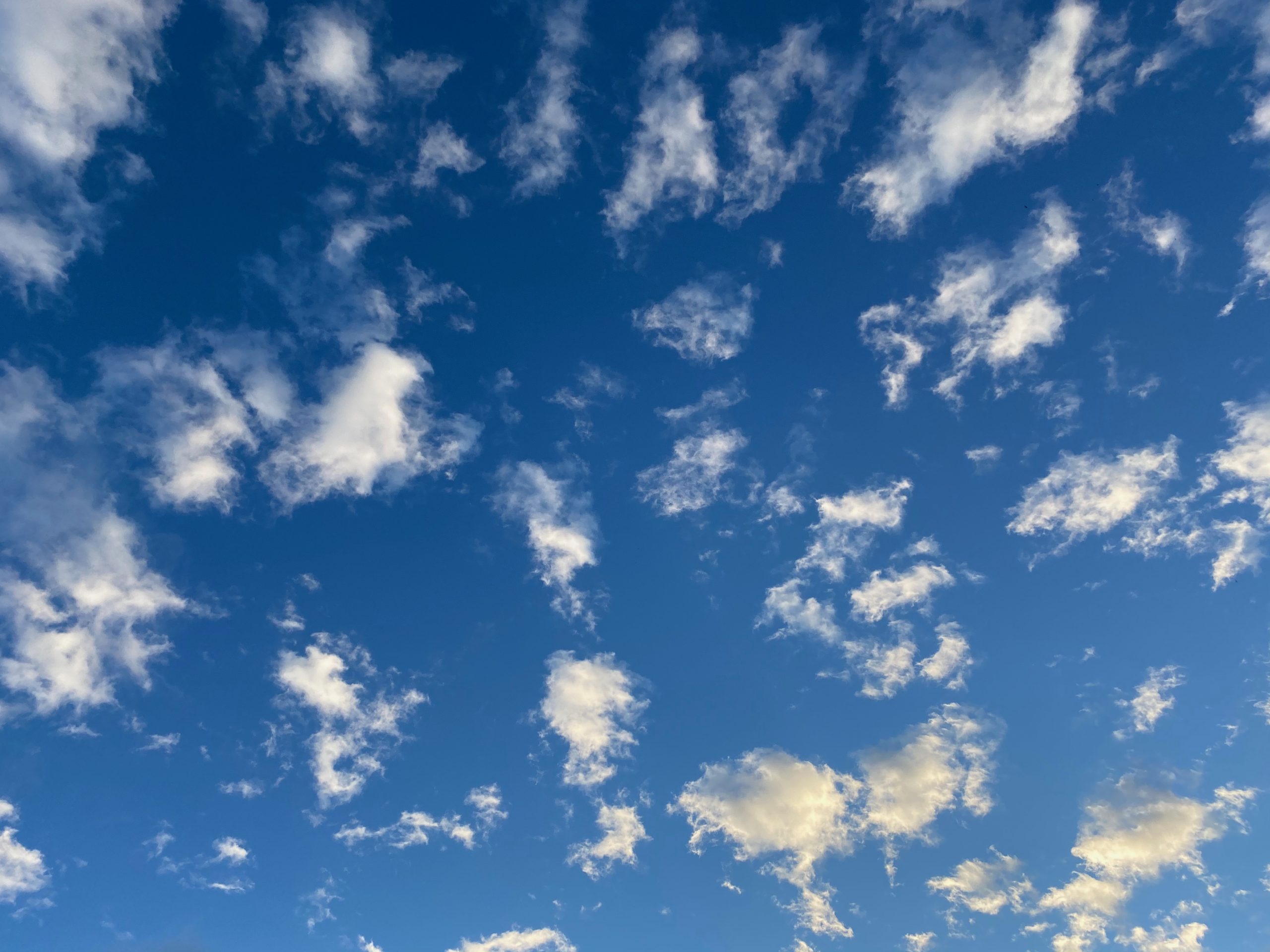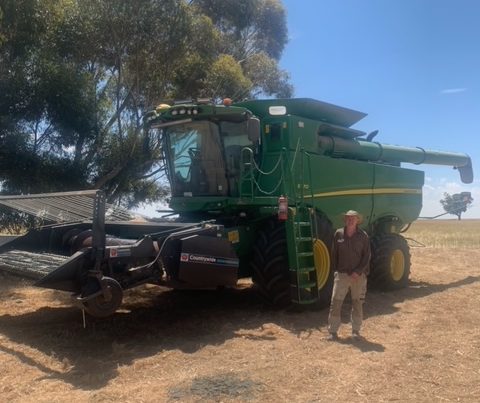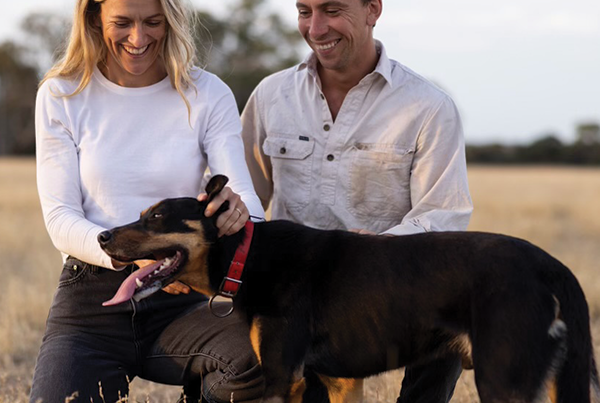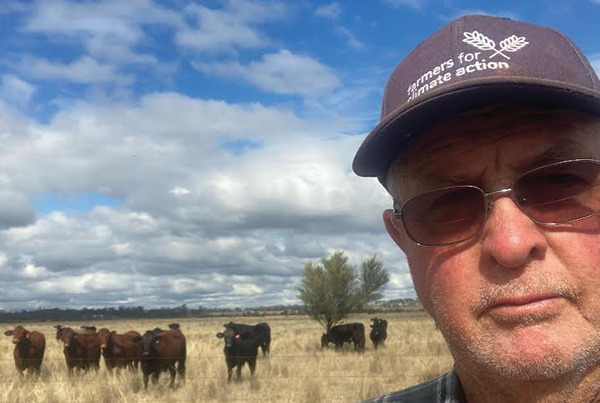
In order to celebrate the amazing work underway on farms across Australia, Farmers for Climate Action is launching a Climate-Smart Farmer in Focus initiative. Each month, we will select a farmer doing great things on-farm to profile and learn from.
Our inaugural Climate-Smart Farmer is Angus (Gus) Whyte, who runs livestock at Wentworth, NSW.
At a glance
Who: Gus Whyte
What: Operates a 31,000ha (12,500ha owned and 19,000ha leased from parents) grazing operation and employs a number of tools to manage stocking rates, ground cover and infrastructure planning.
Where: 85km north of Wentworth NSW on the Anabranch River
Can you tell us about your property?
My wife Kelly and I graze livestock on semi-arid, native rangeland pastures in western NSW. Our numbers are dependent on the amount of pasture we grow, which, in turn, relies on sufficient rainfall.
Currently our rolling 12-month rainfall is just under 100mm, out of an average of around 250mm. “Normally” we would run a bit over 10,000 dry sheep equivalents (DSE) between the two places, right now we have about 10 cattle, as the rest were sold September 17, 2500 dry merino ewes. These should be joined to either Merino or White Suffolk rams, due to dry conditions it doesn’t look like happening.
We also have some freshwater lake beds that are filled by the Anabranch River in flood that we can crop on receding floodwaters. This is very simple cropping that even we can do, in that you put a seed in, it grows and then you harvest it, no chemical or fertilizer required. The last time we did this we harvested sunflowers in March 2015.
Our attitude to farming is simply to work with nature rather than against, so we no longer have weeds, we have “plants with stories” that we can learn from and our aim is to make our business simple and our ecosystem extremely complex: the more complex the better.
Running stock in large mobs (normally > 2,000 DSE) allows us to prune the plants and then also allow those plants adequate rest to re-grow, as we are 100% responsible for our ecosystem.
How has climate change impacted on your farm business?
Climate change is causing more frequent and severe extreme weather events, like floods and droughts. It’s also driving up temperatures. All of this makes farming more complex, increasing our risk and also increasing our cost of production.
What are some of the climate-smart strategies you’ve been employing and how successful have they been?
With our seasons being ever changing it is very important to us that we have a flexible stocking rate so that we can ride with Mother Nature. By looking after our land we have improved our carrying capacity. We have mainly achieved this by reducing run-off and capturing and utilising “out of season” rain events. We are certainly seeing more intense wet and dry events, so having a system that enables us to manage our livestock through this is very important.
We use Maia Grazing,which is an online program that provides us with metrics to help us best assess our current carrying capacity. This program allows us to be proactive about stocking and feeding decisions rather than reactive. We also physically assess available pastures in each paddock and then generate grazing plans to help budget the feed.
We also use an external farm/grazing consultant as he can see our stock numbers, movements and rainfall through Maia Grazing. We have found this invaluable as it is good to have someone with an outsider’s perspective and input. Two heads are better than one, so to speak!
Through the course of feed assessment we also work out what class of livestock the available feed will suit. For instance, it is no good having lots of dry grass for lactating stock. This type of analysis helps us to make informed decisions about what is needed when. We have a very clear policy not to hand feed our commercial stock and this drives us to make early decisions.
We use KLR Marketing to help us match our grass with the most profitable livestock. By making assessments of weight gains and having a plan for each class of livestock, this means we are “selling” our grass as well as we possibly can.
Another tool we use is Farm Map 4D to help keep an eye on our ground cover and work out our infrastructure planning, i.e. where is it best to spend money on wire or water, based on feed utilisation.
Of course these tools don’t replace our own judgment or expertise but they assist us in forward planning for what can be very unpredictable circumstances.
Thanks for sharing your story with us Gus and best of luck for 2019! Do you know a climate-smart farmer who we should profile? Email us today!

